Refugee Women Are Carrying More Than An Uncertain Future
For the first time since the refugee crisis began, women and children now account for more than half of all asylum-seekers in Europe — and nearly one in 10 of those women are pregnant.
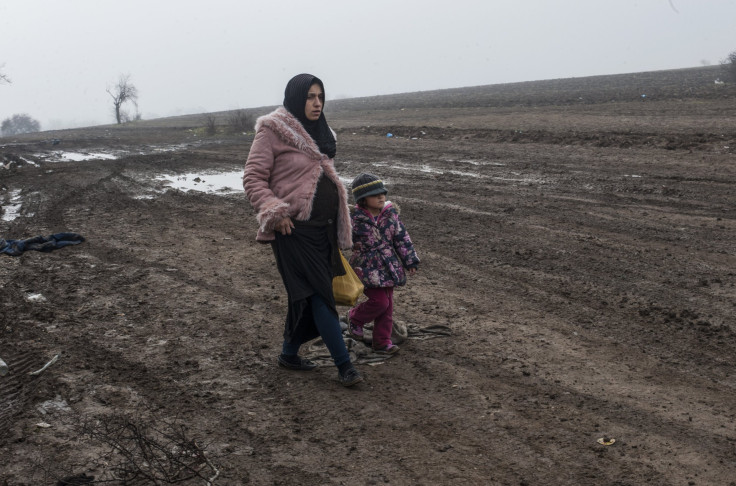
Access to gynecological care became increasingly limited as Sahem Taleb entered the third trimester of her pregnancy. In a cramped apartment in Jordan, the electricity flickered on and off as she struggled night after night to put food and water on the table for her three children and her husband, wondering how she would provide for a fourth child.
Taleb, 36, left her hometown of Daraa, Syria, with her family six months before, in the summer of 2015. Snipers dotted the rooftops of her neighborhood, and she feared for the safety of her children as barrel bombs fell during the fifth year of civil war.
“I worried about the bombing of my children and the bombing of myself,” Taleb told International Business Times. “In Syria, there were a lot of problems for the kids. In the beginning of the conflict, they didn’t travel around or go out because there were a lot of snipers and security forces around ... A lot of people died.”
After struggling to build a life in Jordan, the family was accepted as refugees in Canada. The young mother was seven months pregnant when she traveled more than 10,000 miles in January to arrive at her new home in Alberta, Canada. One month later, in the frosty quiet of a Canadian winter, she would give birth to the first child of a Syrian refugee in the province: a healthy baby boy named Muhammad.
“We have a situation in which pregnant women are the most vulnerable group of refugees — and Europe is turning their back.”
For the first time since the refugee crisis began in the spring of 2015, women and children now account for more than half of all asylum-seekers in Europe. Nearly one in 10 of those women arrive pregnant, creating additional challenges for asylum-seekers and aid groups. They must grapple with reduced access to formula and other baby supplies along remote routes, face the risk of serious injury from lack of gynecological care and confront the threat of gender-based violence from smugglers and border guards. And the dangers on the road to Europe do not end at their destination country. Citizenship law in most European Union countries relies on bloodlines rather than place of birth, potentially creating a generation of stateless babies whose access to healthcare and education could be checked for years to come.
The growing number of pregnant arrivals has pushed some NGOs to bring midwives on every mission related to refugees. Many of the women already have other children to care for, and while they cope with fatigue, heavy-bleeding or other postnatal conditions, they walk for miles each day, often carrying their new baby in their arms and gently leading other children by the hand.
“Most often, it is for their children that they decide to leave,” said Charlotte Hyest, a former emergency communications delegate for the Red Cross in Greece. “It will be difficult, but it will never be as difficult as it was in our country,” she heard women say of the strenuous journey to seek asylum, calling it “the only solution.”
Nearly half of all asylum-seekers in Europe are originally from Syria, where a five-year long civil war has ravaged the country, creating 4.8 million registered refugees, more than slightly half of whom are women. The U.N. estimated that another 6.6 million people are internally displaced by violence, while one in three Syrian children has never known peacetime in his or her lifetime. At least 250,000 people and as many as 470,000 people have died in Syria in the past five years.
The conflict began after anti-government protests in 2011 against the regime of Syrian President Bashar Assad turned violent, eventually spiraling into all-out war as pro-government and anti-government groups splintered along sectarian lines. Amid the chaos, the terror organization known as the Islamic State group moved to capture vast swathes of Iraq and Syria.
Women from Syria, Iraq and other war-torn countries throughout the region were among some of the 1 million asylum-seekers who began their journey to Europe in recent years by taking overcrowded smugglers' boats from Turkey to eastern Greece via the Aegean Sea or from Northern Africa to southern Italy via the Mediterranean. Each step of the journey presents its own unique challenges, but the sea crossing is the most fatal. Nearly 4,000 people died trying to cross into Europe by boat in 2015.
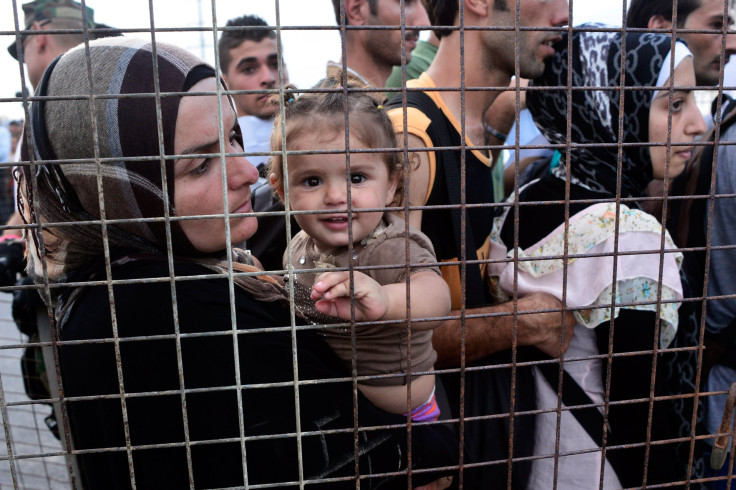
The journey often begins with women waiting on the deck of flimsy boats where oil from leaky motors can pool, inflicting fuel burns and fuel intoxication — a condition caused by swallowing or breathing fuel that can lead to loss of vision, difficulty breathing and, in some extreme cases, vomiting blood. The stress of the voyage can trigger pre-term delivery, as contractions begin while crammed between 100-200 other people in a tiny boat in the middle of the sea.
Miscarriages are frequent, according to Barbara Sollerova, a midwife who works on a Doctors Without Borders rescue ship in the Mediterranean. Her finite access to life-saving resources —like certain medicines, technologies and specialized care from surgeons — has hindered her ability to help a woman through labor on a rocking ship, she said.
“It’s very difficult to manage even when you’re on land in a medicalized [sic] scenario, let alone when you’re in a sea with constraints,” she said.
Wearing a flimsy life jacket over the warmest clothes they own — and often carrying no more than a holy book or a toy for their children — pregnant women board small rubber rafts in Western Turkey almost every night. Under cover of darkness in the choppy surf of chilly waters, asylum-seekers attempt the two-hour crossing, which frequently ends in coast guard rescue or death.
In one incident, the Greek coast guard recovered the body of one woman and her newborn son after their boat caught fire in October, killing more than 300 people. The umbilical cord was still attached to the baby’s body when discovered by divers, suggesting his mother had given birth right before she died, local Greek newspapers reported.
“It is pregnant women, families with kids, people with disabilities and the elderly who face the most hardship.”
Nearly one in 10 women who are rescued from smugglers’ boats are pregnant, according to estimates from Doctors Without Borders. There are so many pregnant women arriving to Europe via boat that the nongovernmental organization (NGO) sends a midwife with almost every crew when conducting rescue missions in the Mediterranean. With nowhere to safely rest or find diapers for their newborns, the mothers are knowingly risking their lives to provide a better future for their sons and daughters, activists said.
Many of the women have been victims of violence in their home countries; and in some cases, the pregnancy is the result of rape. Sollerova began a women’s health support group on the rescue boat Dignity, where she works to educate asylum-seekers about their rights and to serve as a forum for women who have been raped.
“People always attend to the physical wounds which are suffered in the war; and we see it and we prioritize it, and eventually these wounds will heal,” said Sollerova. “But the sexually based violence like these ladies, some of these women don’t want to talk about it.”
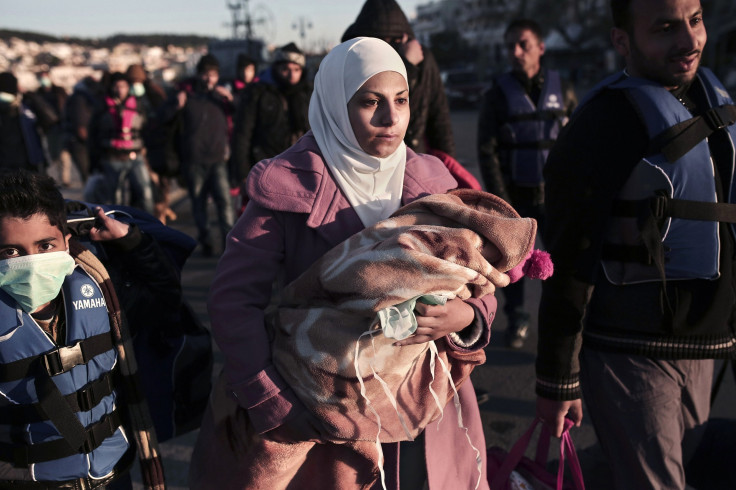
The dangers to pregnant women are far from over when they arrive on the beaches of Greece or Italy. Both Southern European countries serve as transit countries, where asylum-seekers must wait in long lines to be photographed, fingerprinted and documented before continuing by foot, bus, train or car to seek asylum in the country where they want to settle permanently, often Germany or in Northern Europe.
Queues of asylum-seekers stretch for hundreds of yards across white beaches and dusty ports, competing for space with hordes of tourists and sunbathers in the summer months. Among the thousands of refugees waiting behind fences to be registered, pregnant women are among several vulnerable groups who fall behind or are last to register because of fatigue or fear, according to Peter Bouckaert, emergencies director for Human Rights Watch, who operates from Greece.
“In this situation of chaos and, often, violence, it is the weakest who don't dare to go line up for moving on. It is pregnant women, families with kids, people with disabilities and the elderly who face the most hardship,” said Bouckaert in an email interview.
As borders between Greece and Macedonia were sealed in the past several weeks and an accord between the European Union and Turkey effectively shut down the so-called Western Balkans route that stretches from Greece to Northern Europe, these queues and camps have grown even more crowded. Under the deal, all irregular migrants who cross from Turkey to Greece can be returned to Turkey, regardless of their status within a vulnerable group. That means pregnant women, children, the disabled and the elderly are not treated as a separate category.
Syrian people were given priority after the EU adopted quotas for Syrian refugees in 2015. In Lesbos, Greece — one of the top places of first arrival for asylum-seekers from the Middle East — Syrian refugees live in a separate camp from other asylum-seekers and enjoy slightly better conditions, including increased access to medical care. Pregnant women who are not from Syria but may be fleeing sectarian violence in places like Eritrea, Sudan or Afghanistan had been frequently stopped in Greece and sent back to their country of origin or to Turkey long before the brokered deal took effect Monday, according to multiple accounts from nonprofits operating in reception centers in Greece.
“There’s sort of a double standard of refugees,” said Jenny Becker, a former coordinator in Greece for the International Rescue Committee, a global nonprofit that provides aid in humanitarian crises. “If you meet Afghanis or Iraqis who are fleeing the Taliban ... they are also fleeing for their lives."
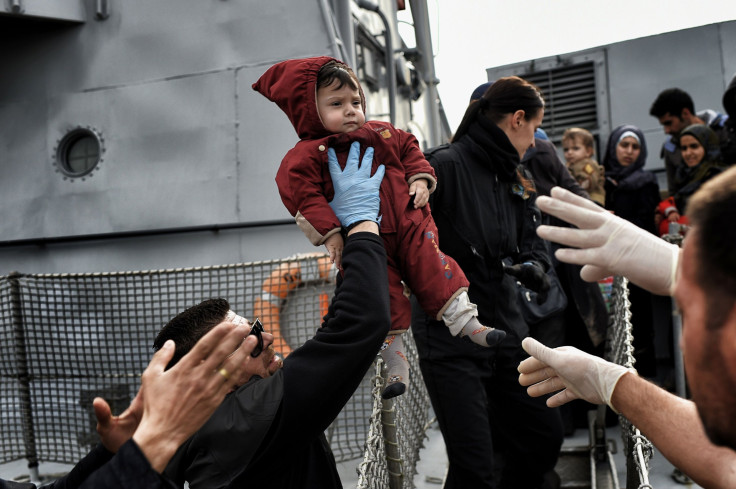
For pregnant women who have made it out of Greece into the Western Balkans route that leads to Germany and Northern Europe through Macedonia, Serbia and Croatia, access to healthcare and vital baby supplies is confined. As women are on the move, their ability to find diapers, formula, and high-protein foods that pregnant women and recent mothers need becomes more challenging.
Little to no gynecological care exists along the route from Greece, and when healthcare services are provided, they are often communicated only in English.
“Information and services have to go hand-in-hand,” said Sarah Costa, director for the Women's Refugee Commission, a non-profit in New York that works in research and advocacy for women refugees. One of the most frequently-treated ailments, particularly in children, has been frozen legs, according to Costa, as a lack of trains and buses increasingly push people to make the journey on foot.
“The fact that they’re moving is often used as an excuse for not doing things,” Costa said, adding, “If we don’t provide safety, we’re throwing women and girls into the hands of smugglers.”
Vulnerable women, particularly those who are young, pregnant, or disabled, have turned to smugglers, where they are at higher risk than men of exploitation and gender-based violence. Survival sex, including exchanging sex with smugglers or with border guards for the right to cross, has been reported, and humanitarian organizations warned that it will only increase as walking routes are shut down following the EU-Turkey deal.

Women are often in their second or third trimester as they make the journey to Europe, and births in boats and along the route are frequent. Children born along the route to Europe or even in their country of resettlement are often branded stateless, because EU citizenship is determined by blood and not by place of birth, unlike in the United States and some other developed Western nations.
The laws vary country to country, but the general rule is that babies born in Europe to parents who are not European cannot apply for citizenship until they are 18 years-old. A U.S.-born descendent of German great-grandparents, for instance, often has a stronger claim to German nationality than a baby born in Germany to a Syrian mother.
“You have a person, let’s say from Congo, who was born in Greece and has lived here for 40 years and doesn’t have citizenship,” said Eva Cossé, a Western Europe researcher with a focus in law, for Human Rights Watch.
While asylum-seekers are often treated as a unique case when it comes to immigration and regulation, the initial lack of a nationality – or sufficient documentation to prove that nationality – makes it even more difficult for the children of refugees to have access to services like health care and education.
“There’s a real risk of a generation of children becoming stateless,” said Tarah Demant, senior director of the Identity and Discrimination Unit of Amnesty International, a non-profit focused on human rights. “You have a child who is born in the camps or born on the road or born in Jordan where refugees are oftentimes in cities in informal settlements – who doesn’t belong anywhere by legal standards. This is a huge problem,” she said.
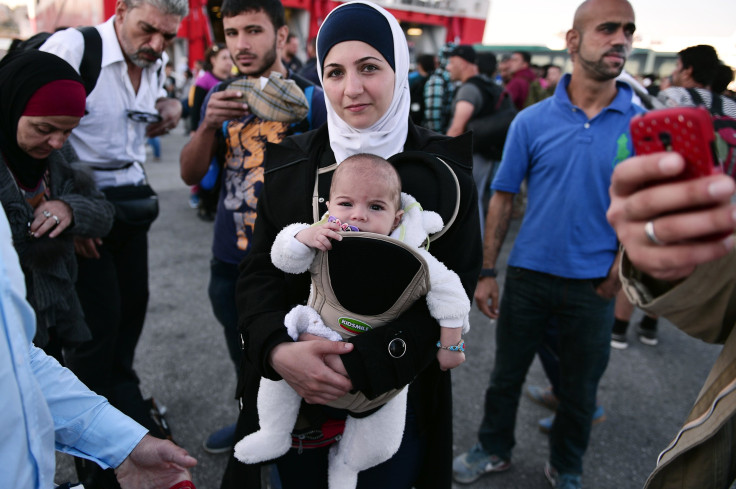
For those women who do make it to their destination country before giving birth, a lack of space in asylum housing — and a lack of stability — continues to serve as a stressor on both a pregnant woman and her fetus. Housing is provided on a temporary basis in the U.K., for example, but some pregnant asylum-seekers were moved between apartments three times before their due date — even just days before giving birth.
“Womens’ need for a stable home weren’t [sic] driving housing decisions,” said Ros Bragg, director of Maternity Action, a U.K. charity that aims to improve healthcare access for at-risk pregnant women.
Pregnant women who had other children and did not speak English, or who didn't have a support network, were frequently forced to leave their sons or daughters with near-strangers in shelters while they gave birth.
“Women have experienced trauma in their home country or their journey to the U.K. are identified as high-risk women by maternity services,” said Bragg, who noted the increased risk of complications, miscarriage and death among this group of women. "It’s important for high-risk women that you have very good communication during maternity care,” she added.
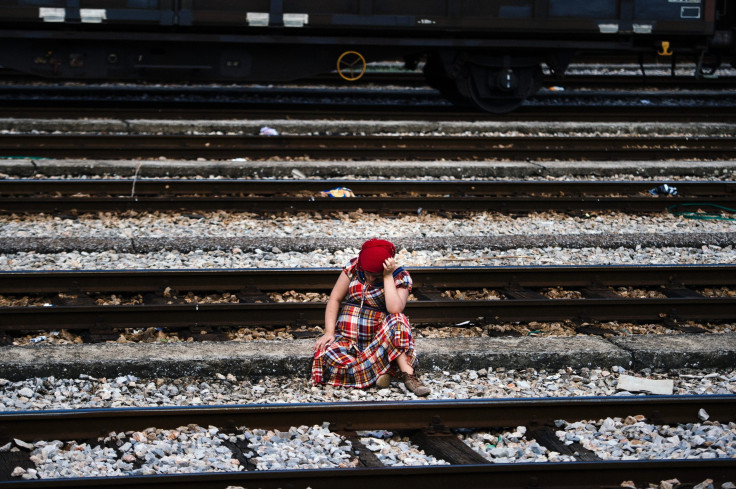
As European leaders re-evaluate their approach to refugee policies going forward, advocates for pregnant asylum-seekers insist that far more can be done to protect the health and safety of such a vulnerable group. Better access to medical care, as well as increased provisions for special foods and vital baby supplies, must be integrated into the European refugee response, nonprofit leaders said.
“For women who are pregnant, or anyone who has specific, medical needs — but for pregnant women specifically — what they are is they’re literally trapped. They can’t go anywhere. So if you’re trapped on a shoreline and aren’t being allowed the legal route to get to the next place for a refugee, there’s no medical care there,” said Demant of Amnesty International. More specialized and available care in transit countries like Greece would be one simple way to improve the circumstances for pregnant women, she said.
“Again we have a situation in which pregnant women are the most vulnerable group of refugees, and Europe is turning their back,” she said.
The only way to truly protect pregnant women and other vulnerable groups of refugees is to allow them to seek asylum through legal routes instead of attempting to block access to Europe entirely, Demant and other humanitarian advocates said. Past border closures have not discouraged migration. They've only encouraged more dangerous routes.

Canada voluntarily resettled 25,000 Syrian refugees who had applied either from their hometowns or from refugee camps in Lebanon and Jordan in the period from the autumn of 2015 to February 2016. The refugees were flown to their new home on chartered planes, eliminating the need for dangerous boat crossings and hundreds of miles of walking.
For Taleb and her family, Canada is a sort of promised land. Volunteers in the city of Calgary donated furniture for their new apartment, and local Arabic speakers translated for her doctors throughout her pregnancy and when she gave birth. She was touched by the generosity of the near-strangers who helped her through the last weeks of her pregnancy and about the quality of the doctors at the hospital where she gave birth to her healthy child.
“I was so happy and joyous when I arrived in Canada. Thank God they treat women here very nicely,” she said. “I give so much thanks to the Canadian president [sic] and the government for taking us in.”
© Copyright IBTimes 2025. All rights reserved.






















